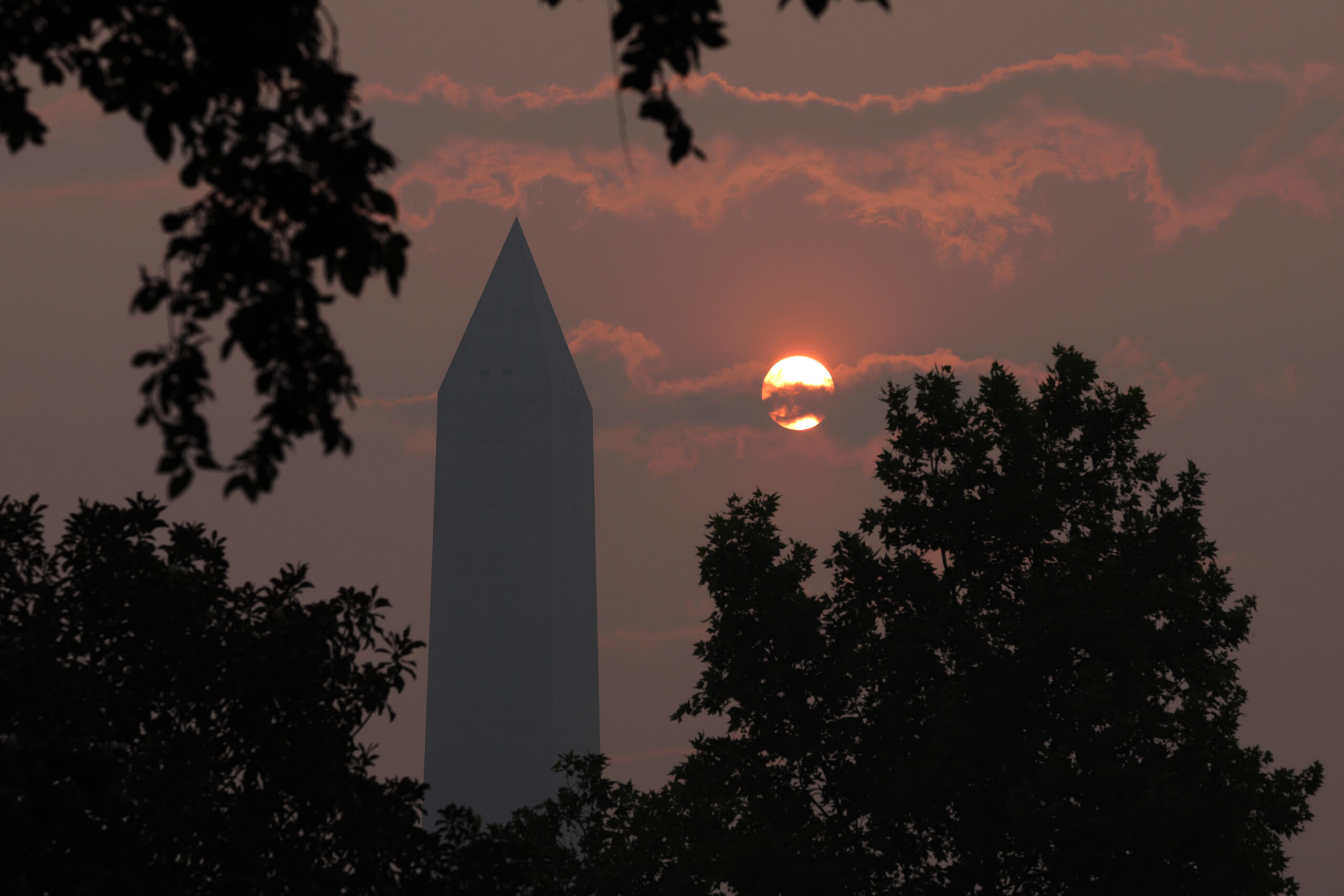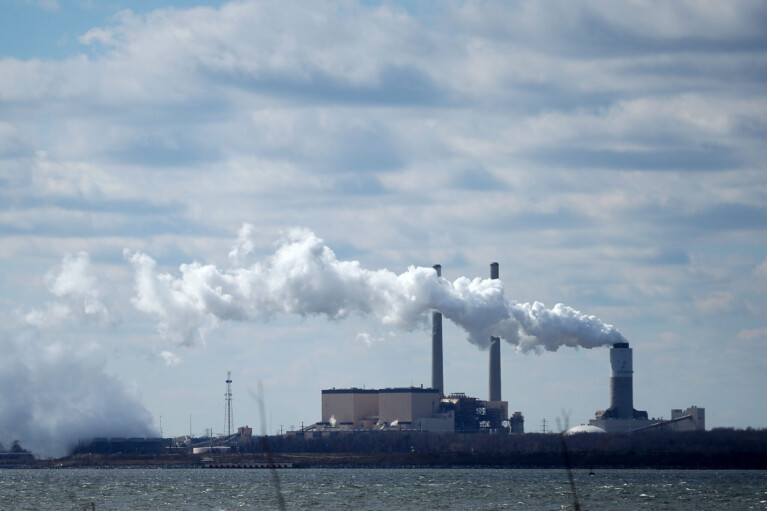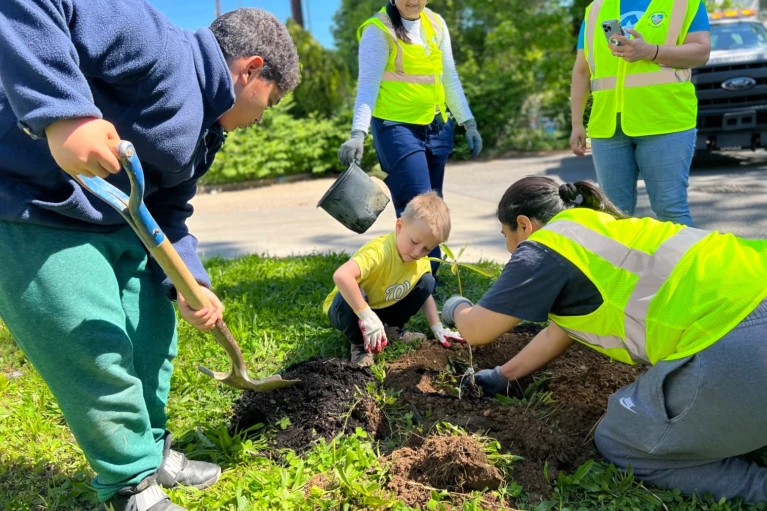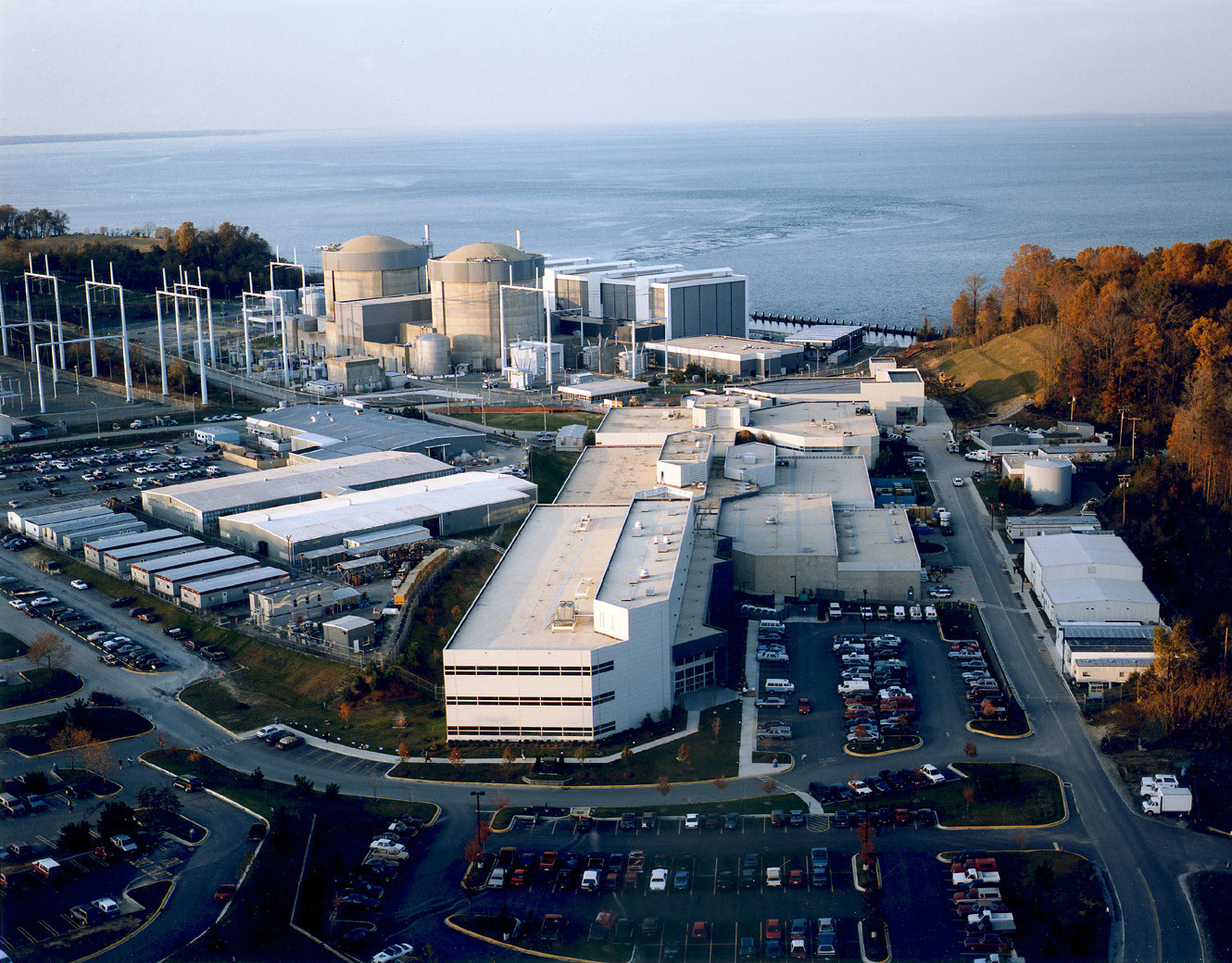Summer wildfire threat could imperil unexpected US regions: the Northeast and Midwest

In a summer of drought, smoke and haze, wildfires could flare up in unusual locations in the United States over the next few months — including New England and the Midwest, according to federal forecasters.
“The predominant threat looks to be the Northeast, which is not normal,” said Jim Karels, the fire director for the National Interagency Fire Center, the federal center in Boise, Idaho that coordinates the national response to wildland fires. “This year it looks like there is potential for elevated fire conditions all the way into August, from Minnesota to Maine and down along the Eastern Seaboard.”
As wildfires continued in Canada, Chicago, Detroit and other parts of the Midwest and Great Lakes experienced poor air quality in late June, and by the last days of June it had encompassed some East Coast cities as well.
The entire state of Maryland was under a ‘code red’ for air quality on Thursday, according to the state’s Department of the Environment, meaning that members of the general public may experience health effects from the smoky air and sensitive groups may experience serious health effects.
The Fire Center’s recent summer outlook forecasts atypical wildfire activity also for the northern tier of the United States, but a reprieve across much of the West, which has in recent years been scorched by above-average fire activity. That’s thanks, in part, to an unusually wet winter and record snowpack.
In a standard year, the lush green days of midsummer would be a quiet season for wildfires in the Midwest and Northeast. The regular wildfire seasons for these regions are early spring and early fall, before new growth has started in the spring and after the summer heat has dried out grasses and leaves that can fuel a fire.
The elevated fire danger this summer is due to the dry spring and forecasts for more hot, dry weather this summer.
“It is unusually dry for early June in the Great Lakes and there are above-normal temperatures. That is what is exacerbating the situation,” said Steve Marien, a meteorologist and the Eastern Area Fire Weather Program Manager for the National Park Service. “There is quite a bit of drought either in development or in place … especially in the northeastern quarter of the US. It’s abnormal for this early in the summer.”
A June 22 update from the U.S. Drought Monitor shows a map blotted in drought warnings from Virginia to Vermont, including Maryland, and over much of the Midwest.
The East Coast has primarily “abnormally dry” to “moderate drought” conditions. A stretch of Maryland, including parts of seven counties and all of Howard County and Baltimore City, are classified as “severe drought,” as of Tuesday.
Wisconsin, Minnesota and Michigan’s lower peninsula are in moderate drought. And Kansas, Missouri and Nebraska have large areas of extreme drought.
That’s highly unusual for this time of year, but Marien says conditions can change. Further drought could develop in parts of the Midwest and Northeast, or with some luck, rain could restore the region over the coming months.
But recent rains that cooled the mid-Atlantic around the days of the summer solstice were not enough to bring the region out of moderate drought.
Fire analysts use data and forecasts from the National Forest Service and National Weather Service to make the wildfire forecast, which they update monthly to help direct firefighting resources.
The unusual fire patterns could place a strain on some federal firefighting resources, which are usually centered in the West over the summer. The National Interagency Fire Center helps coordinate where to strategically place air tankers, helicopters and other resources.
“It evolves around fire threats — weekly and daily we are looking at what resources we have and what is available,” said Karels, the fire director from NIFC.
Fires scorch North Carolina, Michigan
Already, unexpected blazes have ravaged parts of the East Coast and Midwest.
A campfire in Grayling, Michigan, on June 3 sparked a fire that burned for four days. It consumed 2,400 acres and prompted evacuations before it was contained.
Nationwide, as of June 22 there were 12 large fires in four states: New Mexico, Washington, Arizona and North Carolina, according to the National Interagency Fire Center.
In North Carolina, a prescribed burn June 13 raged out of control, burning tens of thousands of acres and growing big enough to be seen from space. The air pollution from the fire caused red alert air quality warnings.
A prescribed or controlled burn is a tactic that forest managers use to try to mimic natural wildfire patterns in a controlled setting — letting fire burn some debris in a forest and then putting out the blaze. The N.C. Wildlife Resources Commission conducted the prescribed burn, and the N.C. Forest Service responded to assume command of the fire. It is now 100 percent contained.
The National Weather Service issued warnings in June for critical fire risk in Michigan, Pennsylvania and New Jersey. And Michigan, Minnesota, Wisconsin and the East Coast states have seen multiple air quality alerts due to hazy skies, increased ground level ozone and particulate dust.
Maryland’s latest ‘code red’
Maryland entered its second ‘code red’ for air quality related to Canadian wildfires on Thursday.
A ‘code red’ is issued when smoke and pollutants drive the Air Quality Index to ranges between 151 to 200 on the 500-point scale.
Mid-day Thursday, Western Maryland was experiencing 174 AQI air quality, the worst in the state, according to the Department of the Environment’s data. Central Maryland and the Eastern shore ranges from 154 AQI to 164 AQI, with southern counties experiencing slightly less smoky air quality.
The Maryland Department of Health and Department of the Environment urged Marylanders to consider limiting their time outside Thursday and to avoid heavy exertion until air quality improves.
“People who must be outside, such as outdoor workers, should be alert for symptoms such as difficulty breathing,” the two state agencies warned.
Current forecasts report that winds Friday should usher some of the smoky air out of Maryland, offering reprieve for the general public but still posing some risk to sensitive groups.
Climate change
The smoke lifted from some of the record-breaking bad air quality days that New York, Philadelphia, Baltimore, D.C., Detroit and Chicago experienced earlier this summer, when particulates from wildfires in Canada brought gray and orange skies reminiscent of the Star Wars planet of Tatooine. But by the last days of June, it had returned.
With parts of Canada and the United States at risk for an unusually active fire season this summer, the Midwest and Eastern United States could be in for more unusual fire activity and the air pollution that comes with it.
“There will be more air pollution days because of wildfires, no doubt about that,” said Andy Hoell, a research meteorologist at the National Oceanic and Atmospheric Administration, known as NOAA. “Where they start, where they burn and also the weather patterns will determine how bad it will be in certain areas.”
There are three main ingredients that create a wildfire: fuel (grasses, plants, leaves, trees, and anything that burns), ignitions (from humans or lightning), and dry conditions.
Wildfire smoke contains fine particles of smoke and soot. The particles naturally move on air currents, and the heat of wildfires can push smoke higher into the atmosphere, helping it to travel longer distances. Weather patterns like wind, pressure systems and rain can affect where the smoke from a wildfire travels.
Wildfire is a natural part of forest ecology. But the size and number of recent wildfires is not the norm.
As climate change brings hotter, drier weather, wildfire seasons are getting longer and more intense. And some of the fires are burning hotter and longer because there is so much dry fuel available to feed the flames.
“By generally any metric we look at around the world, wildfires are getting worse, burning larger areas more severely at higher elevations, and burning over longer periods of the year.” said Kristina Dahl, the principal climate scientist for the Climate & Energy program at the Union of Concerned Scientists.
It is not a linear trend, since some years are better than others. But the area burned by wildfires has doubled in Canada since the 1970s and quadrupled in the Western United States in that same time. Longer, drier summers have erased the concept of a “fire season” and turned it into a “fire year” in some parts of the arid West.
“In the case of any one particular year it can be hard to say because there is a lot of variability from year to year, but we know that the increase in heat extremes, for example, that the Midwest has seen, are linked to human-caused climate change,” said Dahl.
Worsening fires have created a climate-fire feedback, as carbon dioxide from the fires spews into the atmosphere.
A study published in the journal Science Advances found that wildfires in the North American boreal forests — like those aflame in Canada this month — have the potential to play an outsized role in future fire-related emissions. Boreal forests contain roughly two-thirds of stored global forest carbon.
Wildfires in these forests could contribute 12 gigatons of carbon dioxide emissions into the atmosphere over the next three decades, according to peer-reviewed research from scientists at the Union of Concerned Scientists, Woodwell Climate Research Center and Tufts University. That amount is equivalent to the annual emissions of 2.6 billion fossil fuel-powered cars.
In another study, researchers determined emissions from the 2020 wildfires in California could have wiped out the gains the state had made in greenhouse gas reductions since 2003.
“In order to prevent wildfires from growing worse in the future, one of the most important things we can do is reduce carbon emissions and wean ourselves from fossil fuels” said Dahl. “The more we emit going forward, the more we can expect wildfires to continue to worsen, big picture and long terms.”
Editor’s Note: An earlier version of this report misstated which agency in North Carolina conducted a prescribed burn. The story has been corrected.
Maryland Matters reporter Danielle J. Brown contributed to this report.




 Creative Commons Attribution
Creative Commons Attribution